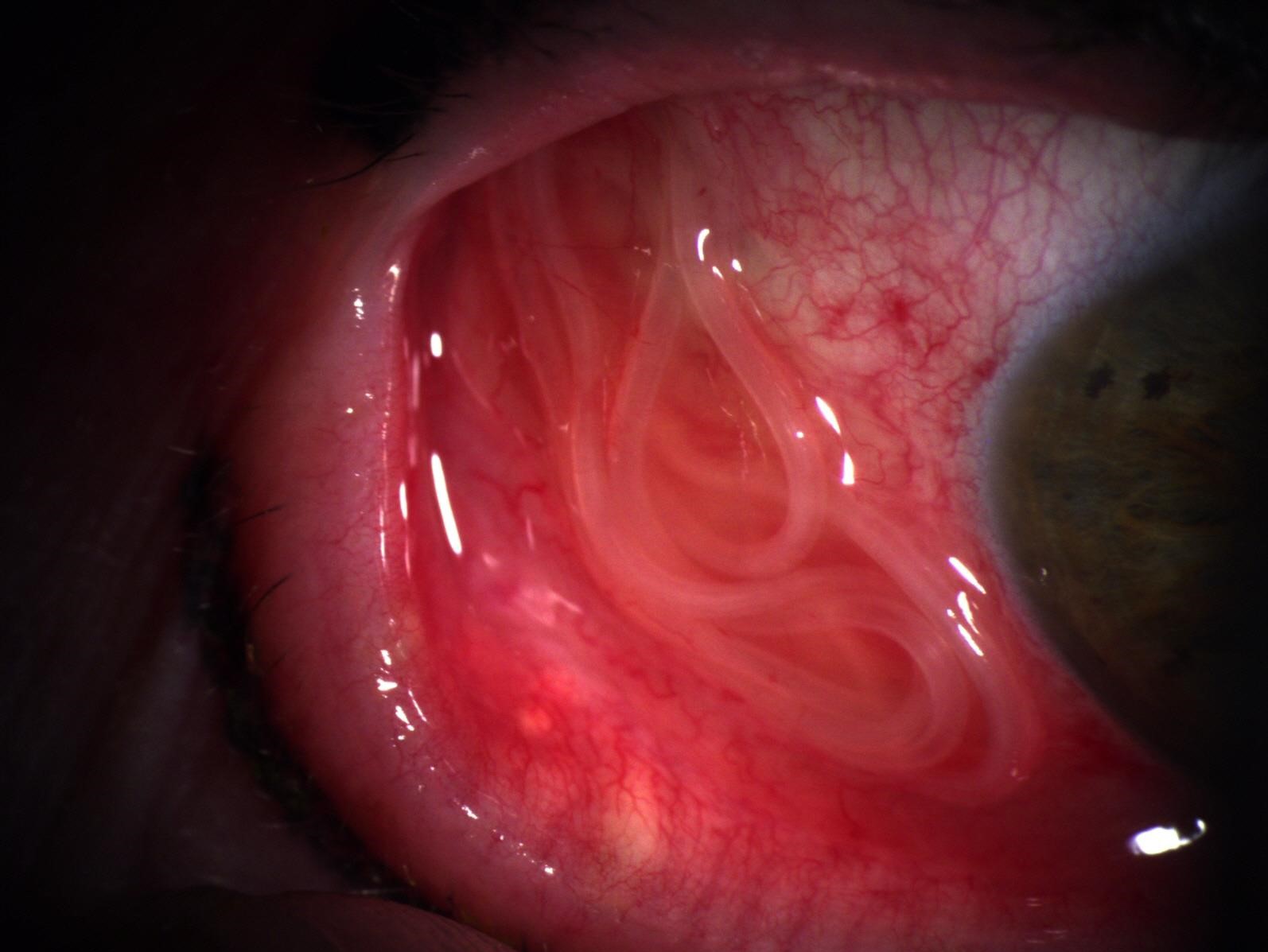Keeping it Creepy with Dr. Beebe
 As anterior segment specialists, the doctors at Cornea Associates of Texas see a whole host of injuries and infections. But, every once in a while a strange case will catch us by surprise.
As anterior segment specialists, the doctors at Cornea Associates of Texas see a whole host of injuries and infections. But, every once in a while a strange case will catch us by surprise.
Dr. Walter Beebe, a partner at Cornea Associates since 1986, caught an unusual case just before the end of business one afternoon in March of 2015. A 65 year old female presented with an atypical subconjunctival foreign body in the right eye. The patient had traveled to several exotic locales for work and was likely exposed to an afflicted animal or insect.
"the worm was grossly visible with the naked eye"
Upon further examination the “foreign body” proved to be a live parasitic worm. The worm was underneath the conjunctiva (the thin, clear membrane that covers the sclera and the pink underside of the eyelids) and sclera (white of the eye). Because the conjunctiva is so thin, and this particular worm so long, the worm was grossly visible with the naked eye where it had curled up and settled. It could even be seen moving.
Dr. Beebe counseled the patient on the most likely species, possible method of transmission, and how the parasite likely came to manifest in its current location. Dr. Beebe made the recommendation to have the worm surgically extracted and sent to a pathologist for identification. He also cautioned the patient that a systemic work-up was necessary to ensure the parasite hadn’t manifested anywhere else in the body. The patient had the worm extracted the next day. Dr. Beebe was able to successfully remove the worm in its entirely keeping it completely intact. It measured 13.5cm; nearly 5.5 inches!
The pathologist successfully identified the parasite as dirofilaria tenuis (which is actually endemic in many areas of the United States including Texas), as Dr. Beebe had suspected. This particular parasite is a parasitic roundworm that infects the subcutaneous tissue of vertebrates. They most commonly infect raccoons, but are also common in dogs and are a cause of heartworm. They have a characteristic spaghetti noodle-like appearance and, true to form, our patient’s worm looked like a wad of spaghetti underneath her conjunctiva.
The patient in this case fully recovered with no adverse aftereffect, but it just goes to show you never know what to expect in sub-specialty!


